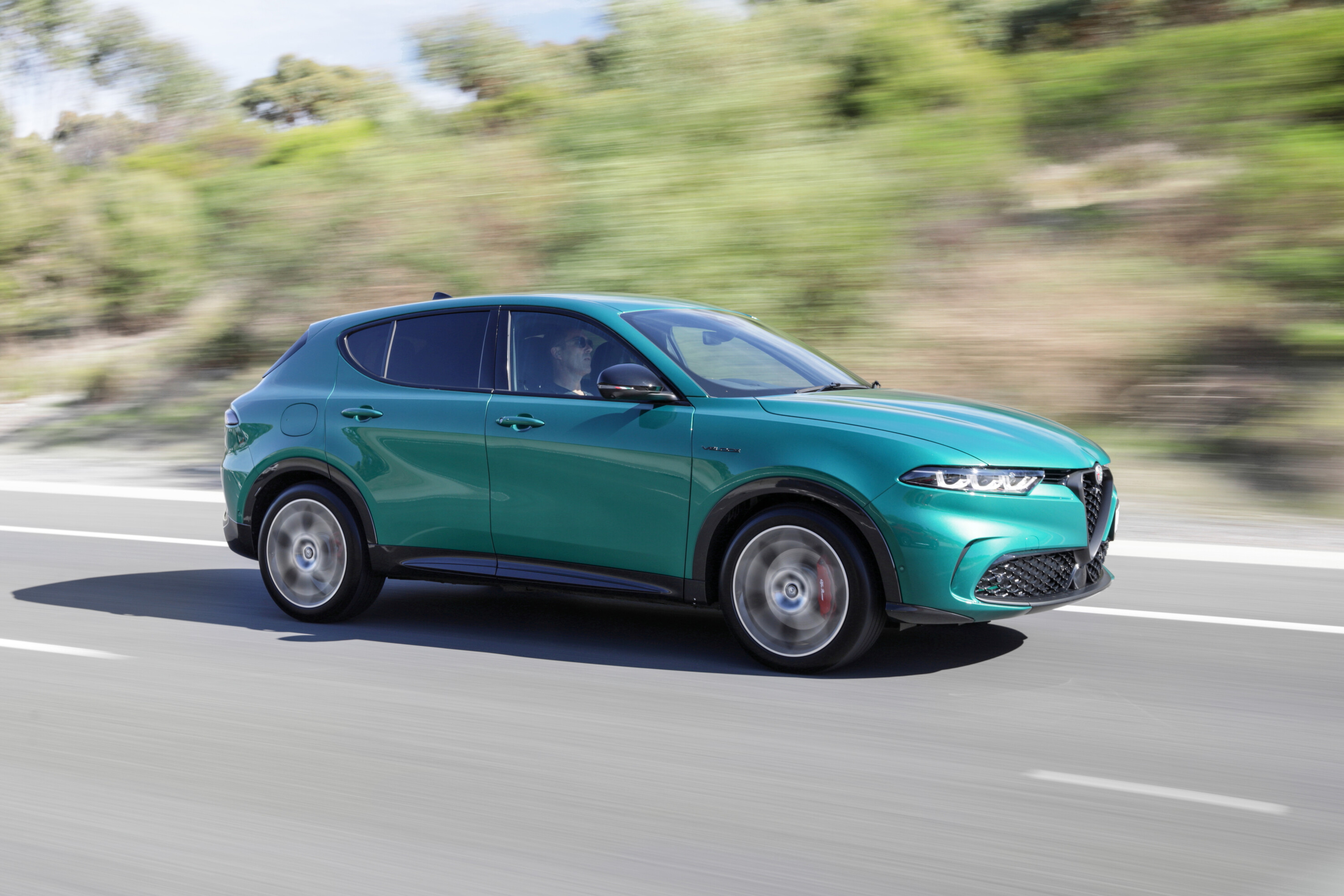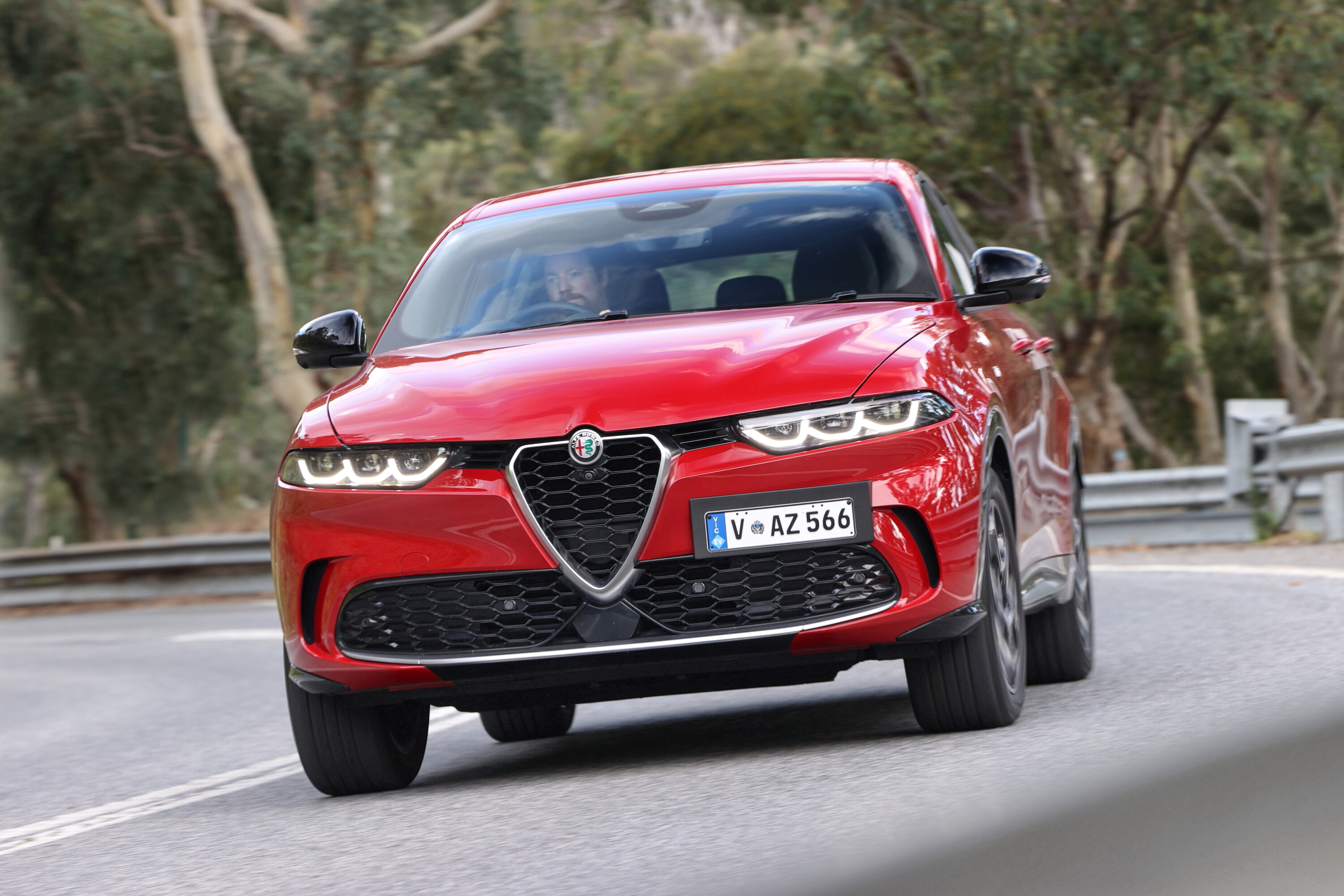Score breakdown
Things we like
- Strong range on battery alone
- Forward-thinking
- Materials quality and fit a big step forward
- Relative exclusivity
Not so much
- Feels all of its 1835kg through corners
- The price is a bit of a stretch
- Small in the back
- We experienced some glitchy electronics
A plug-in hybrid vehicle is a fiendishly complicated thing to get right. Think about it.
You need the best parts of an internal combustion engine vehicle, the best parts of an electric vehicle and then a whole extra entity that seamlessly blends the two. So now I’m going to ask a potentially rather loaded question: Would you trust Alfa Romeo to get all of that right?
That’s what the success or failure of Alfa Romeo’s Tonale Q4 boils down to, isn’t it? If we strip away all the peripheral flim-flam, it’s a question of trust. I think most of us would trust the Japanese to be able to manage that level of complexity, but there’s a gulf in trust that Alfa Romeo needs to be able to bridge before buyers will decide that the Tonale PHEV is a prudent place in which to park $77,500 of their hard-earned (excluding on-road costs).
Let’s take a look and see if this fascinating compact SUV can lay the foundations towards building those bridges.
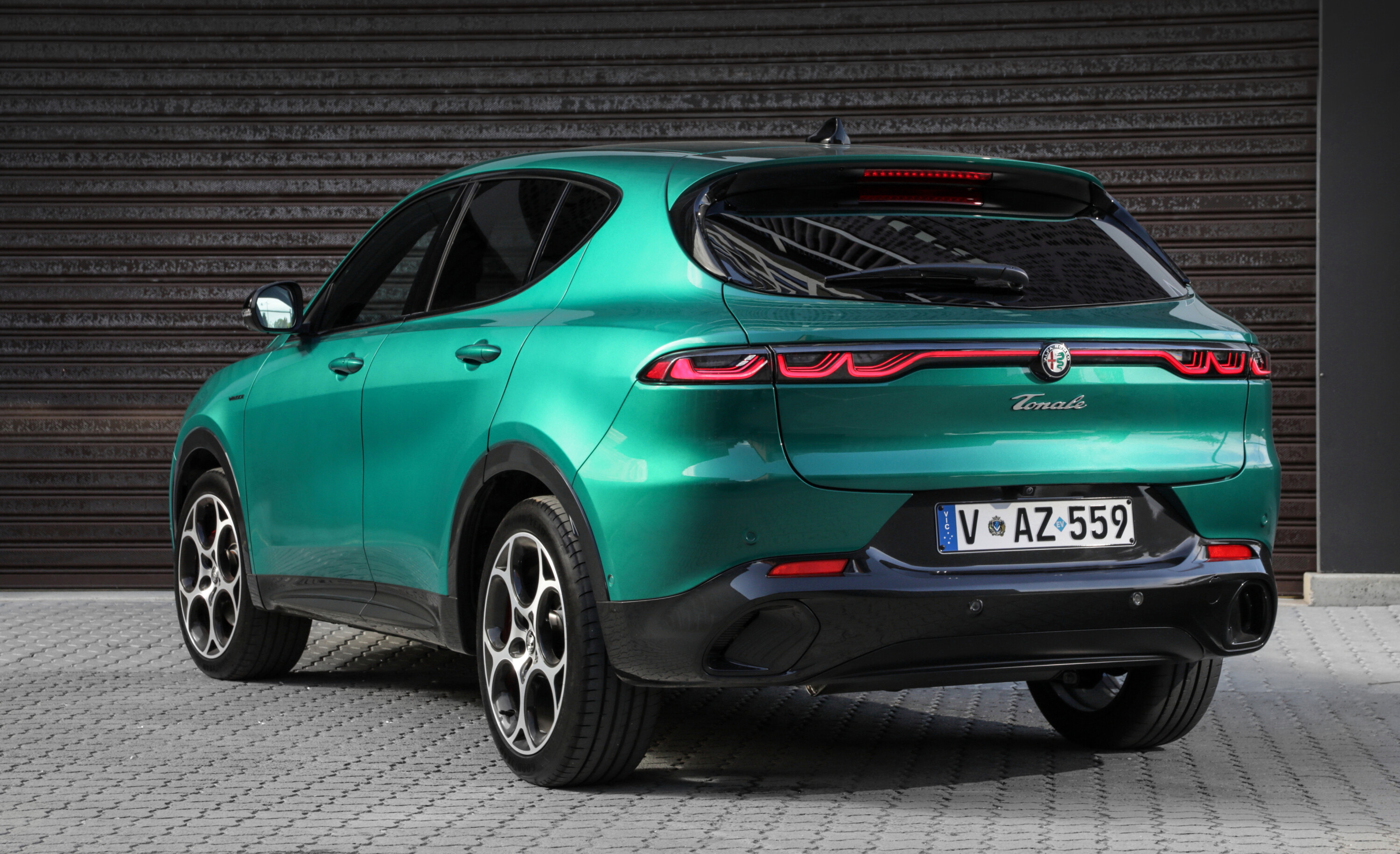
JUMP AHEAD
- How much is it and what do I get?
- How do rivals compare on value?
- Interior comfort, space and storage
- What’s it like to drive?
- How is it on fuel?
- How safe is it?
- Warranty and running costs
- VERDICT
- Specifications
- Frequently asked questions
How much is it and what do I get?
Ah yes, that price. It’s a hurdle. Fully $21,000 more than the existing Tonale Veloce hybrid, the plug-in appears a non-starter from the get-go.
Right now you’re probably starting to do the mental maths in order to figure out whether the payback period for the PHEV arrives before the heat death of the universe. But before you get into that, there are some mitigating factors to consider.
Firstly, this is a very different beast to the regular hybrid. That gets a rather mealy-mouthed 118kW 1.5-litre petrol engine that drives the front wheels and results in a vehicle that occasionally struggles to get out of its own way.
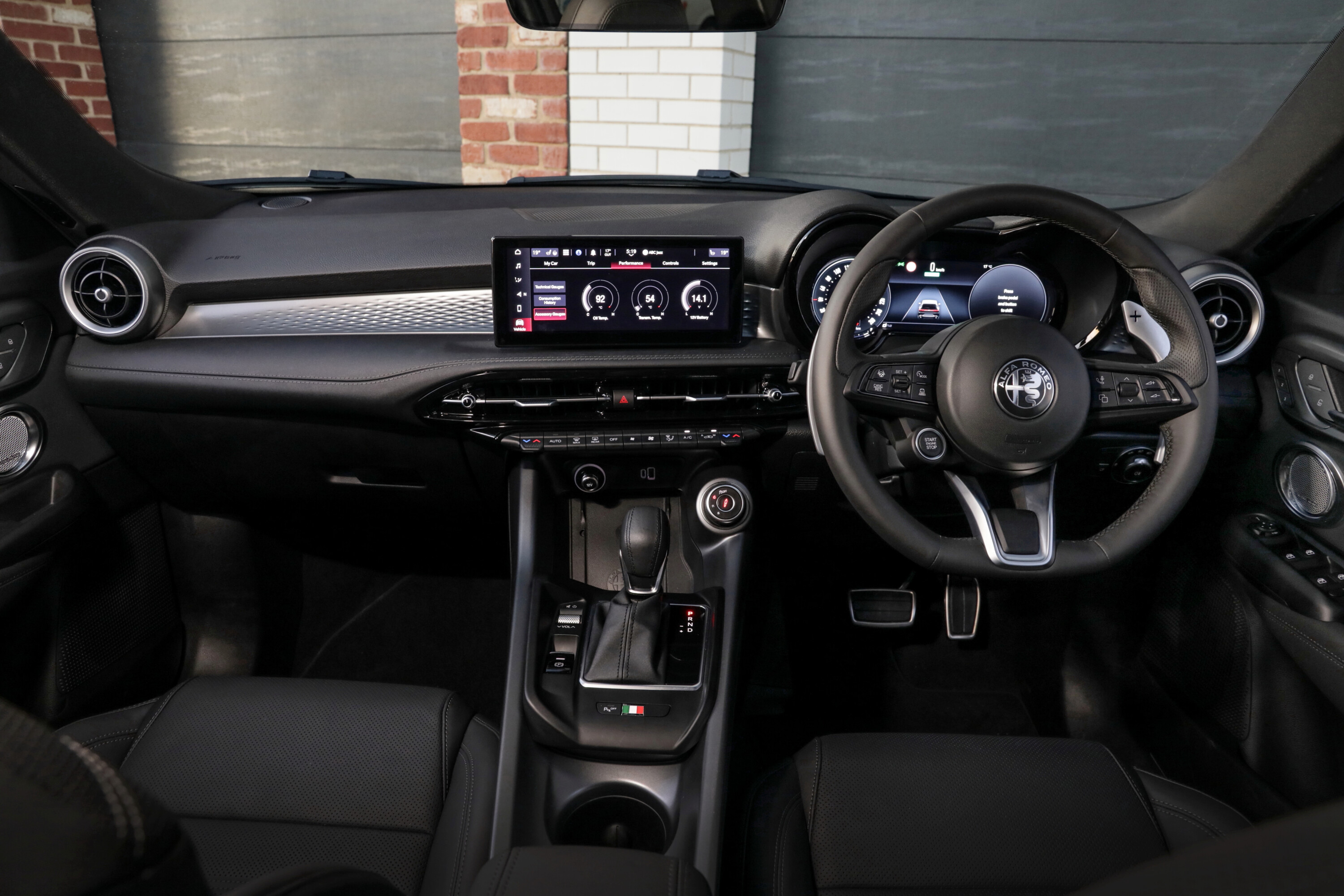
Although the Q4’s engine is even smaller – a bambino 1.3-litre unit – hybridisation means that all four wheels are driven and the system output is a very healthy 208kW.
Then there’s the fact that in Alfa-land, not all Tonale Veloces are created equal. This plug-in variant also benefits from the otherwise optional Lusso pack as standard. This adds:
| Alfa Romeo Tonale Q4 Veloce Lusso pack | |
|---|---|
| Perforated black leather seats | Heated steering wheel |
| Embroidered Alfa Romeo logo | Heated washer nozzles |
| Eight-way electric front seat adjustment | PTC heater |
| Driver’s seat position memory | 14-speaker 465W Harman Kardon premium audio |
| Heated and ventilated front seats | Dark grey double stitching |
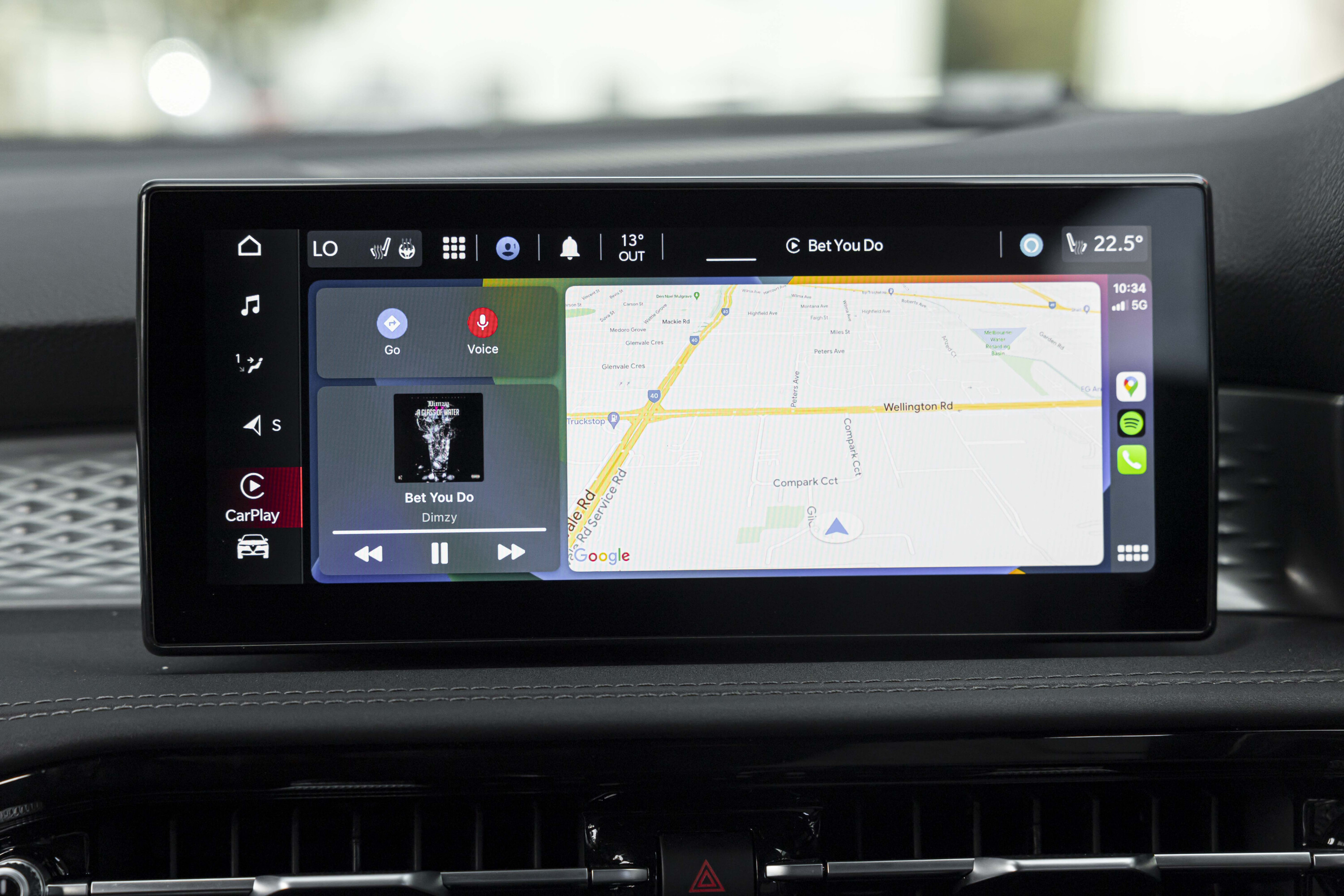
The Q4 Veloce PHEV also bundles the following equipment over and above the normal hybrid Tonale:
| Alfa Romeo Tonale Veloce PHEV features |
|---|
| Sunroof |
| Chromed exhaust tips |
| Elettro-Biscione logo on rear left window |
| Type 2 smart charging port and Mode 2 charging cable |
In case you weren’t aware of the full trim list that this builds upon, features common to both hybrid models include:
| Alfa Romeo Tonale Q4 Veloce equipment | |
|---|---|
| 19-inch diamond-cut alloy wheels | 12.3-inch TFT instrument cluster |
| Brembo brake calipers | 10.25-inch central touchscreen |
| 360u00b0 cameras with dynamic lines | Wireless charging pad |
| Adaptive cruise control | Road sign recognition |
| Auto-dimming external mirrors | Automatic full LED matrix headlights |
| Wireless Apple CarPlay and Android Auto | Aluminium pedal set |
Alfa White is the only no-cost option paint finish available for the Tonale, with Alfa Red, Alfa Black (at some point somebody in the colour naming department ran out of imagination) complementing Vesuvio Grey and Misano Blue (all $1600 extra). Montreal Green tri-coat, a Veloce-exclusive paint finish, will set you back $2500 extra.
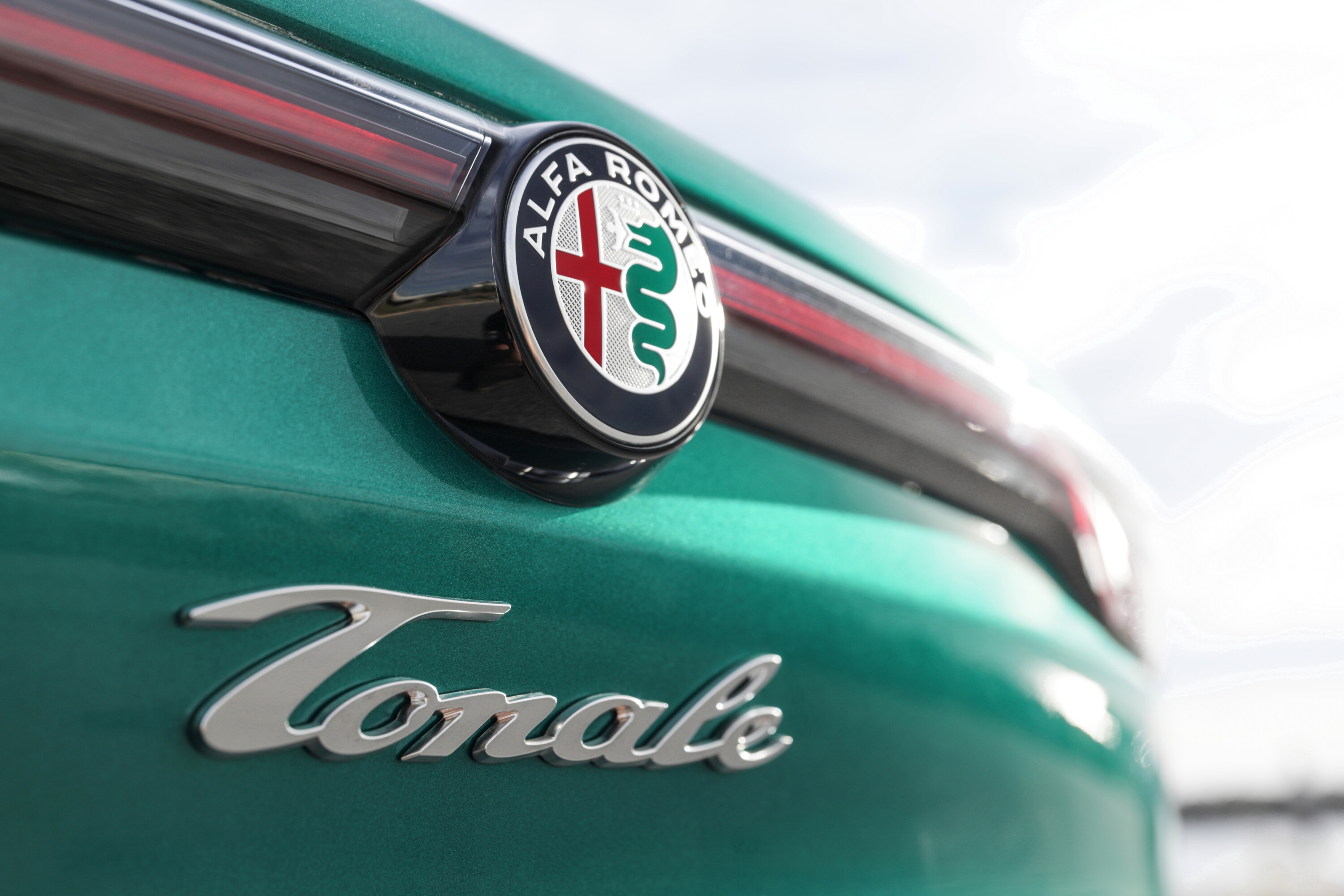
How do rivals compare on value?
In terms of size, price and badge equity, you’d expect the rival set to ostensibly comprise the Audi Q3, BMW X1, Mercedes-Benz GLA, Lexus UX and Volvo XC40; each relatively compact five-seat SUVs with desirable badges that measure between 4400 and 4600mm from stem to stern.
The more perceptive among you will already have noted the caveat here. None are available as plug-in hybrids. Hybrids, maybe; EVs possibly, but you generally have to step up a class into something the size of a BMW X3, a Range Rover Evoque or an Audi Q5 to be offered the option of a plug-in hybrid model.
Given these start well into the six-figure bracket, who’s to say the Tonale PHEV is in any way overpriced?
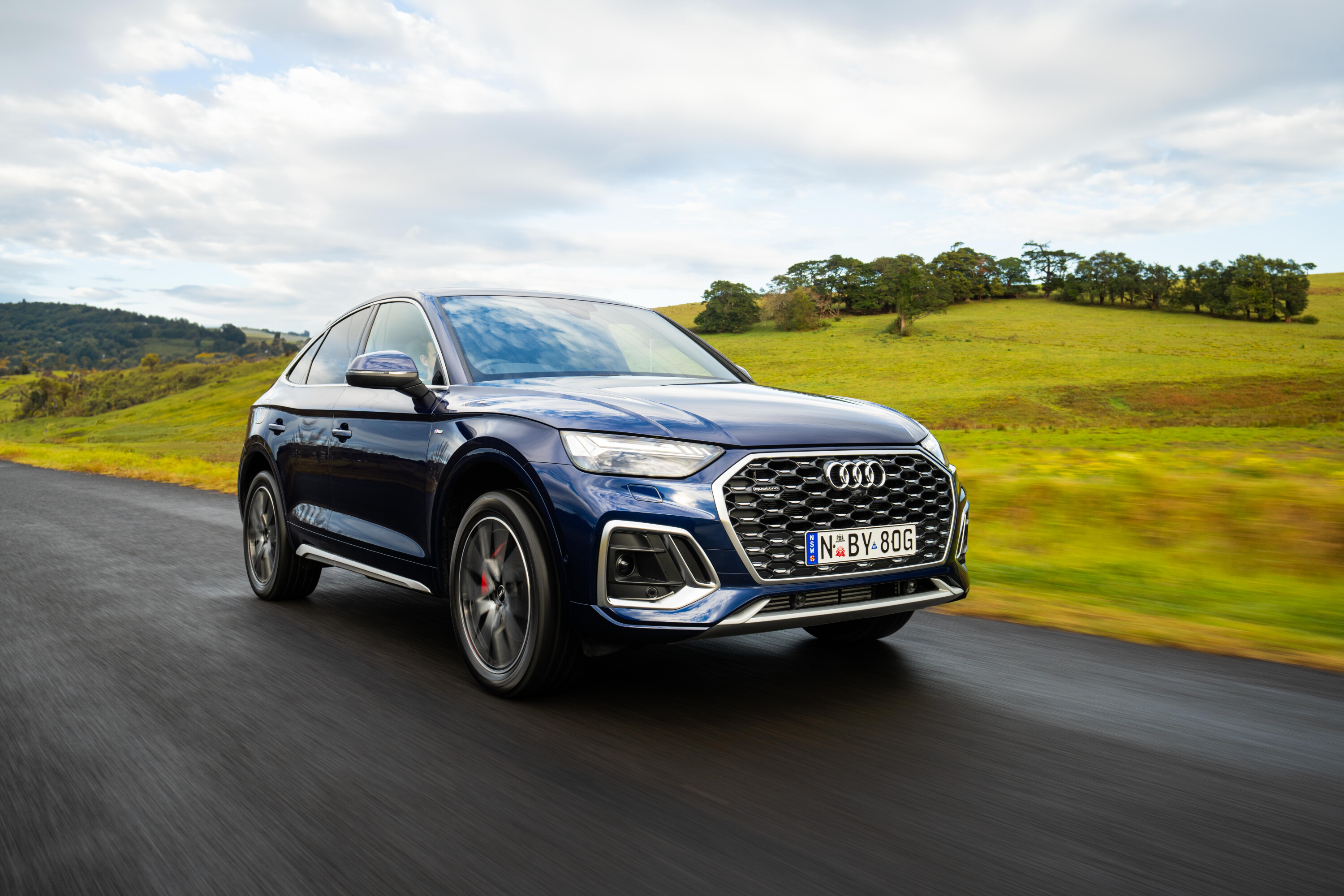
You’ll pay $72K for a Mitsubishi Outlander PHEV of a broadly equivalent trim level, so maybe the asking price isn’t quite the issue many of us originally thought it was. Time will tell.
The most direct rival, on paper at least, is the $64,990 (excluding on-road costs) Cupra Formentor VZe. It’s neither as powerful nor as quick as the Alfa and sends drive exclusively through the front treads, but if you want a plug-in hybrid in this class, the Spanish car is an entirely credible and viable value pick.
An outlier in this group is probably the $81K Kia Sorento GT-Line PHEV, which appeals to a different audience than the Tonale. The Alfa’s more of a no kids yet/empty nester’s choice whereas the Korean seven-seater is resolutely family-oriented.
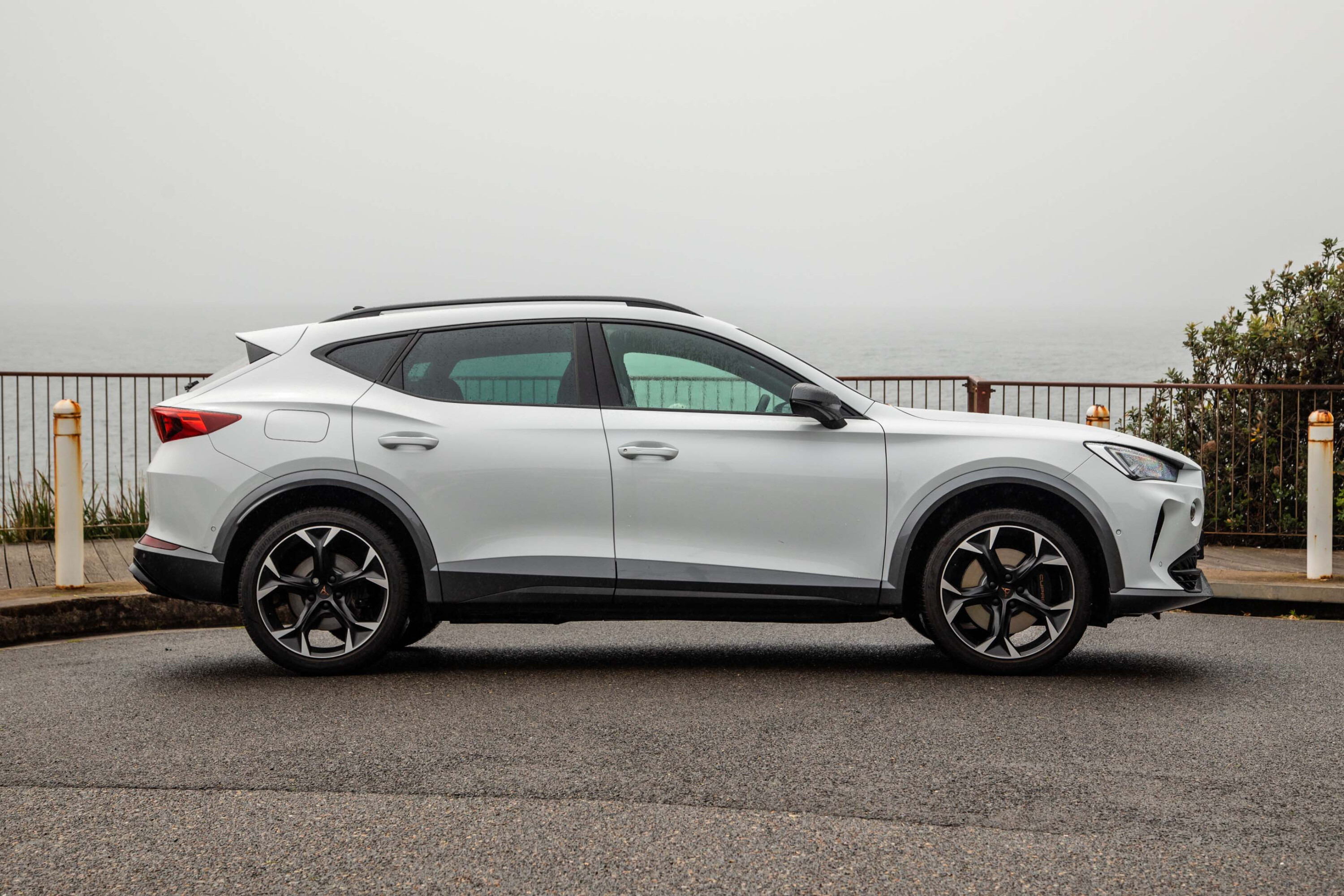
Interior comfort, space and storage
The Tonale is built on Stellantis‘ SCCS platform, a chassis that can be traced all the way back to the 2005 Fiat Grande Punto.
It also underpinned the likes of the Opel Corsa D and E, the Alfa MiTo, the Fiat 500X and even the Jeep Renegade. This version of the SCCS bones are stretched and broadened and dubbed ‘Small Wide 4×4 LWB’ and it sits under the Tonale, Jeep’s Compass and Commander as well as the Dodge Hornet and even the Ram Rampage ute.
Despite the chassis easing out the belt in two dimensions, the Tonale’s not a very big car. To give you some sense of scale, at 4528mm long, it’s 28mm longer than a BMW X1.

While the Alfa feels quite cosy up front, if you get your seat into the right position and try to climb behind, you’ll quickly come to realise that its 2637mm wheelbase is actually 30mm shorter than a Corolla‘s.
So it’s pretty squeezy back there. It’s not impractically tiny, and there are both USB-A and USB-C ports to fight over in the back as well as air vents, a retractable armrest and a through-load ski hatch. It just feels a little dark with the high window line and black leather trim.
There’s also a penalty to pay for the all-wheel drive system and that’s a higher boot floor. This limits the storage space to 385 litres beneath the parcel shelf, although it extends to 1430 litres if you flip the 60:40 split rear bench down.
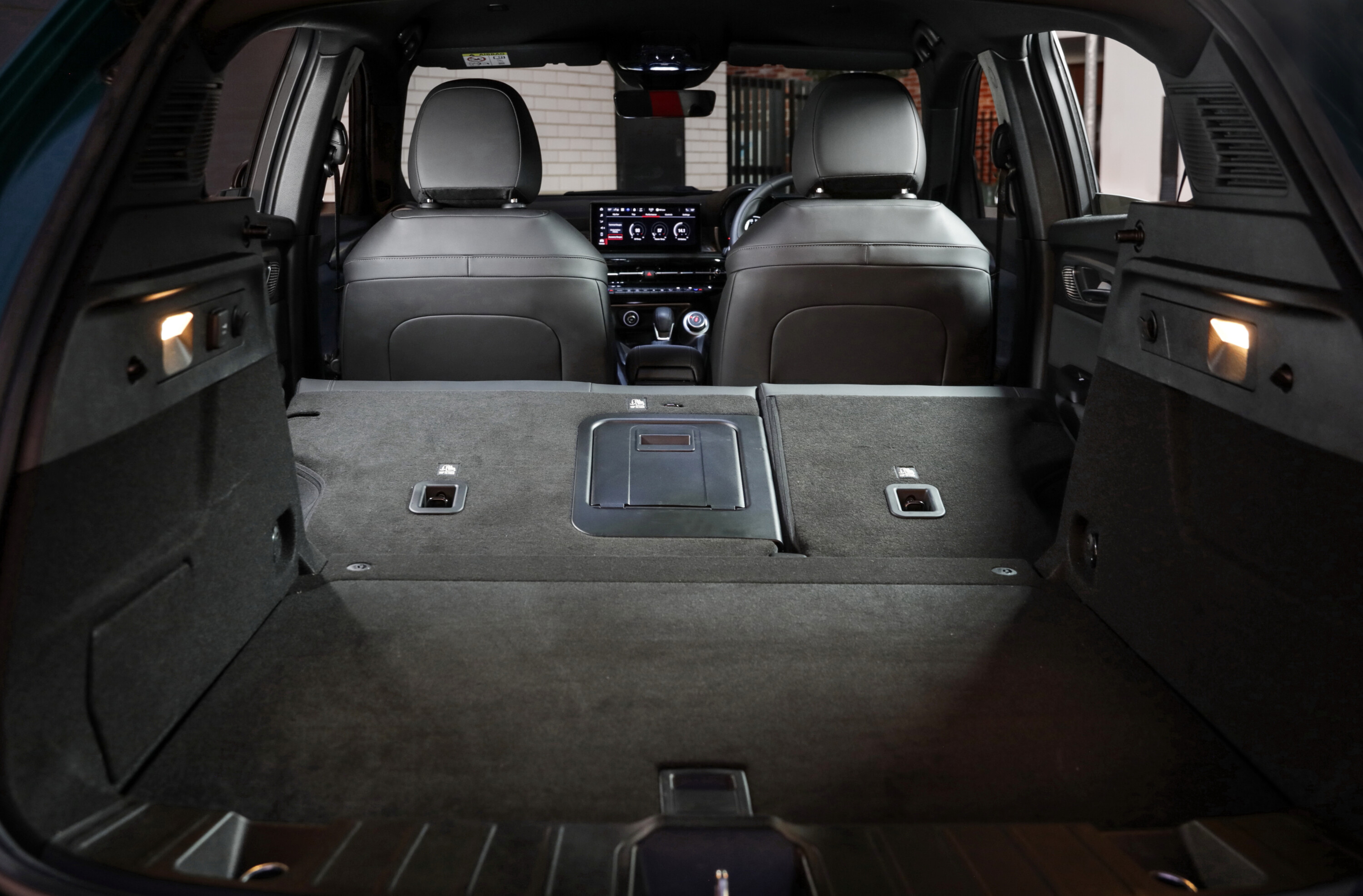
This vehicle is more about the front-seat occupants, however, and they’re well catered for.
Its dash design is typically Alfa, with flared cowlings above the instrument pack and dashes of the Italian Tricolore contrasting with some very impressive quality finishes.
The sports seats deserve special mention, as they are supportive, they look great and they’re absolutely what you’d expect to find if you’d bought into the Alfa heritage.
I’m not particularly sold on the instrument panel. In short, there’s a lot going on, with power meters and various other PHEV-specific gauges that are both unclear and broadly unhelpful even when you’ve taken the time to figure out what they’re trying to communicate.
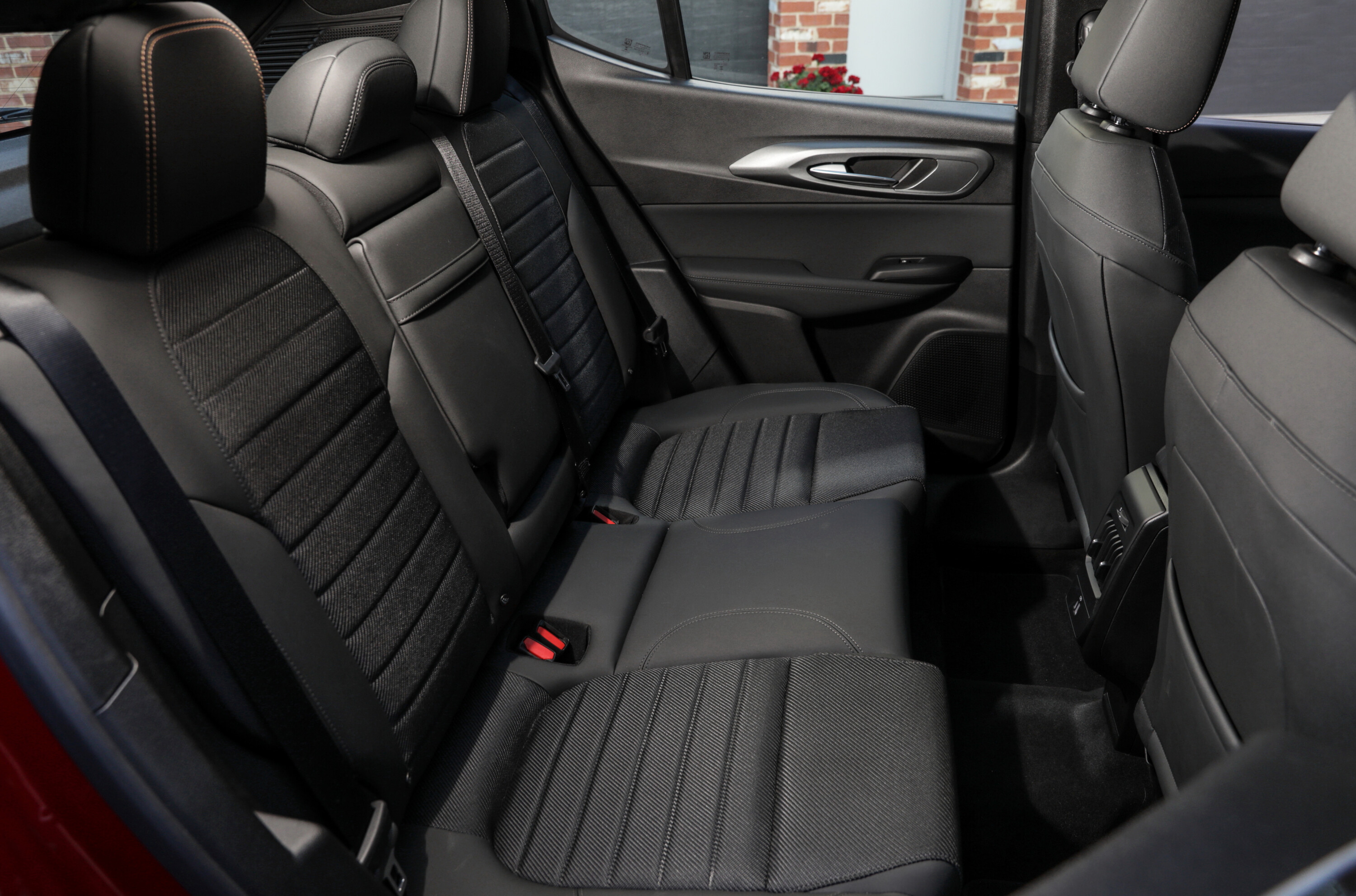
I’m not convinced by the calibration of the DNA dial either. A plug-in hybrid should be able to very easily perform three functions: build charge in the battery, hold existing charge in the battery and absolutely rinse everything when you need full power.
Switching between those functions very clearly and easily ought to be the very first prerequisite when designing the user interface but with the Tonale, it’s all a little cryptic.
It’s not helped by the fact that the electronics in our test car were somewhat glitchy, rebooting the system spontaneously on occasion, freezing on others and constantly flashing messages that a phone was on the wireless charger which required a manual cleardown. Buyers in this class expect things to work and issues like this erode confidence.
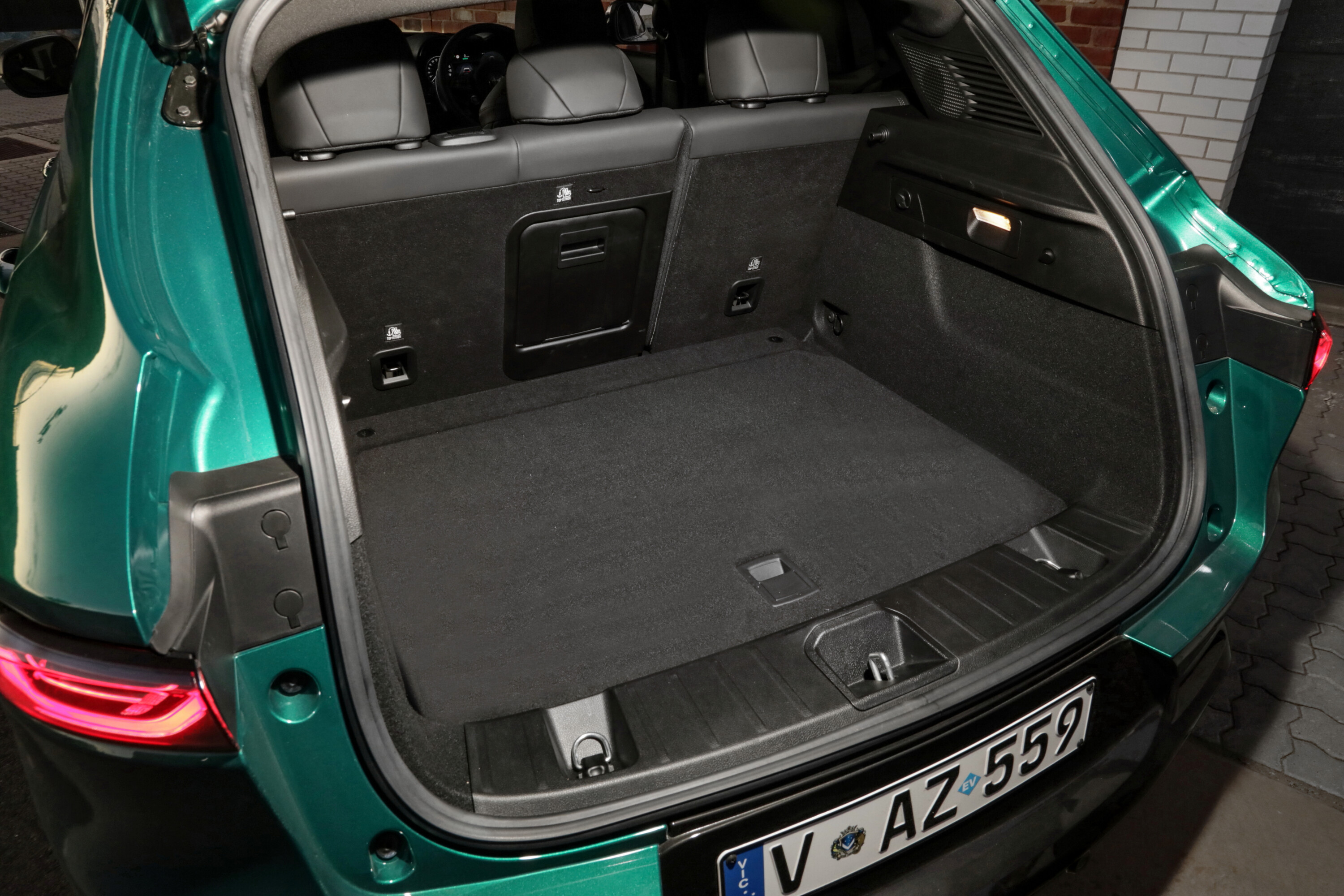
What’s it like to drive?
The question I was asked more than any other after driving the Tonale PHEV was “Does it feel like an Alfa to drive?”
The answer to that is, annoyingly, ‘it depends’. Some elements of the Tonale’s genetics feel very Alfa. It rides tautly, which is why I’d counsel caution before ticking the options box for 20-inch alloys.
It certainly has some spirit if you switch the DNA mode dial to Dynamic and clog the throttle. The little 1.3-litre four sings its heart out and it’s all very invigorating. You could imagine zipping around the streets of Florence in one of these and feeling very pleased at having won the holiday hire car lottery.
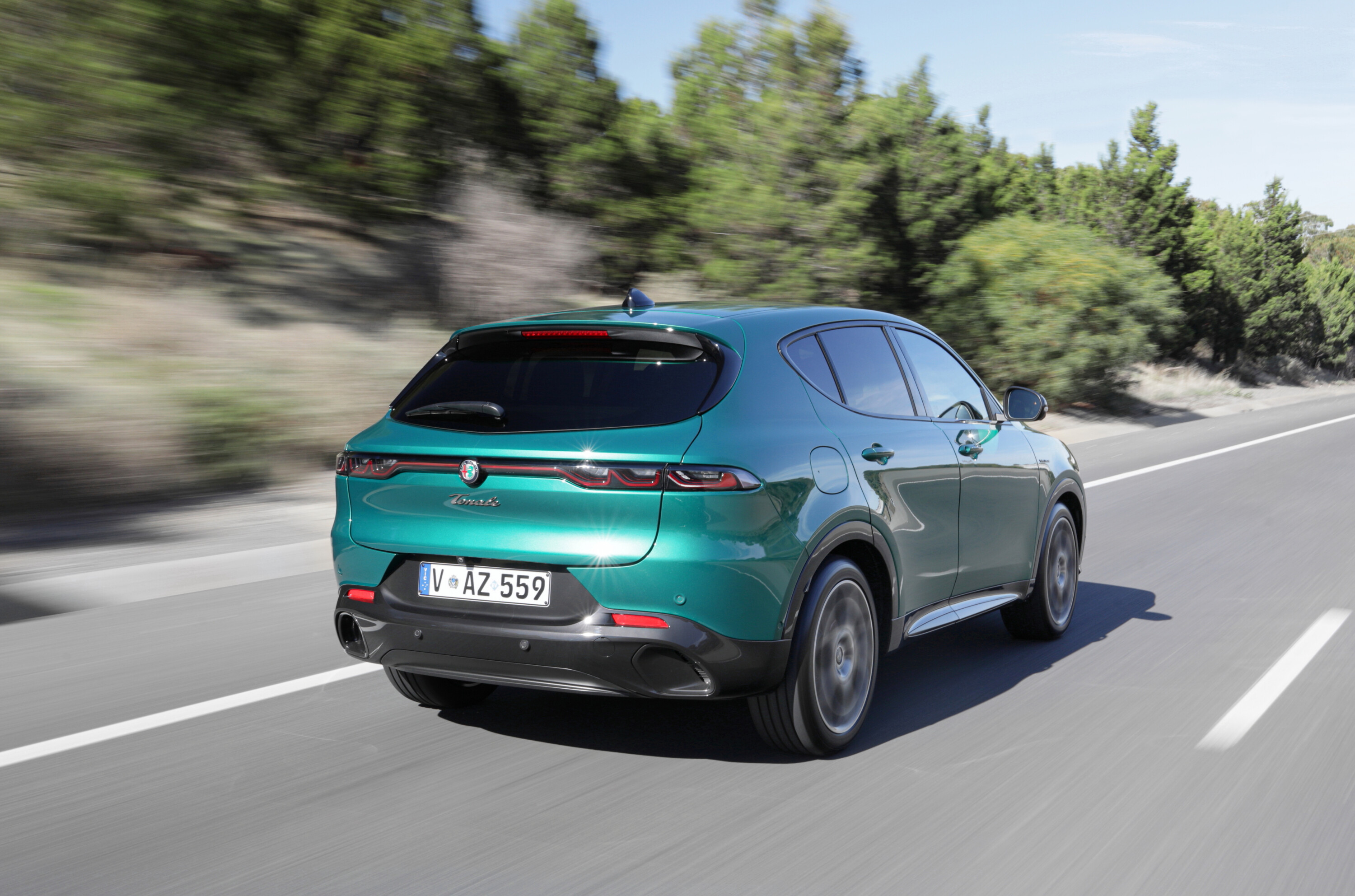
All is not completely rosy, however. With both an engine and two motors plus a 15.5kWh battery pack to lug up the road, the Tonale Q4 is a heavy car.
Not heavy by the standards of EVs, but at 1835kg it weighs as much as, say, a Mercedes-Benz GLC 300. You’ll feel that heft the moment you throw it into a corner. Roll is generally well controlled, but the flip side is that the Tonale rapidly lapses into understeer, which the stability control system manfully tries to bring back into line.
The Tonale’s suspended front and rear on MacPherson struts, a rare layout for a car of this ilk, but it seems to work for a Porsche Cayman GT4. Another slight oddity is that despite being 320kg heavier than the regular hybrid, it uses smaller front brake discs (305x25mm versus 330x28mm).
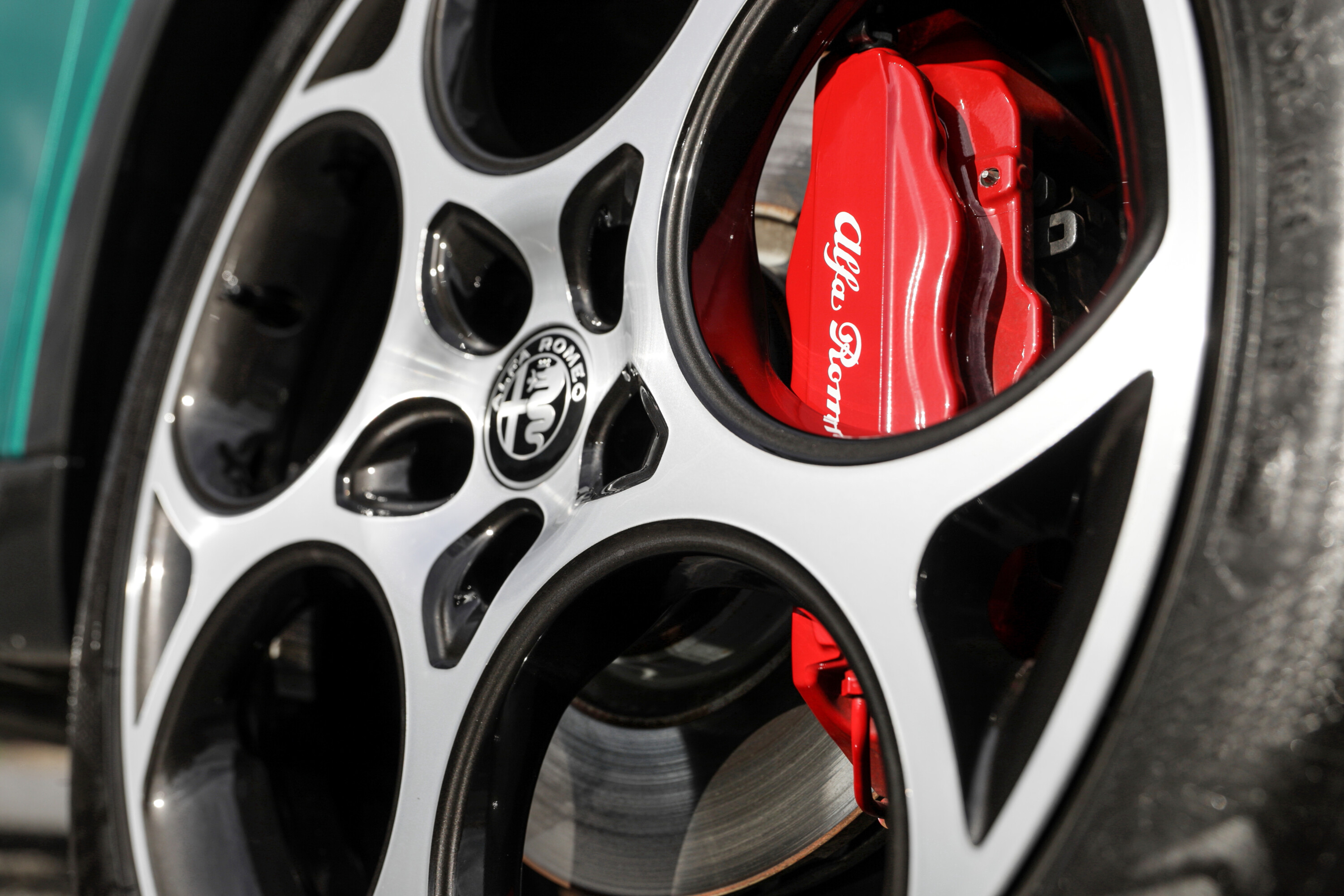
Part of the reasoning behind this is that regenerative braking takes up a percentage of deceleration duties, the other being that the regular hybrid uses a wholly basic single-piston floating caliper whereas the Q4 Veloce gets the meaty Brembo four-piston fixed items.
Any kind of typically Alfa-style ‘enthusiastic’ driving seems frowned upon. Tread on the brake pedal with any degree of brio and the car starts flashing its hazard lights as if you’ve performed some sort of socially reprehensible act.
The steering is also rather odd. If, like me, you grew up on a steady diet of Alfa Romeos, you expect decent steering. The Tonale’s is almost entirely devoid of feel when the vehicle is switched into its fuel-sipping Advance Efficiency mode. Granted, an early Corolla Sportivo is worse, but other than that, the only other steering system that I can think of that offers less feel is a vintage Atari Pole Position arcade game.
Things improve by twisting the dial into Dynamic. This brings some additional weight to the wheel, but not a great deal of detailed feedback.

You also get the option of switching the frequency-selective dampers into a softer mode, which helps improve grip a little on a twisty road. In this setup, the Tonale feels quite entertaining, but it’s still hard to mask all that weight.
The key issue that afflicts the Tonale Q4 is that you never quite know what the car’s doing beneath you. Pay attention, because this is like the science bit you find in shampoo commercials, but the drive system boils down to this:
Up front, there’s the 1.3-litre engine which, on its own, makes 132kW and 270Nm. That’s mated to a six-speed automatic transmission and it drives the front axle. So far so conventional.
At the back, there’s a 90kW electric motor that drives the rear axle, hence all-wheel drive. Software handles the coordination of front and back, shuffling charge in and out of the 15.5kWh CATL nickel-manganese-cobalt battery that sits beneath the centre tunnel and rear seat, adding 118kg to the car’s kerb weight.
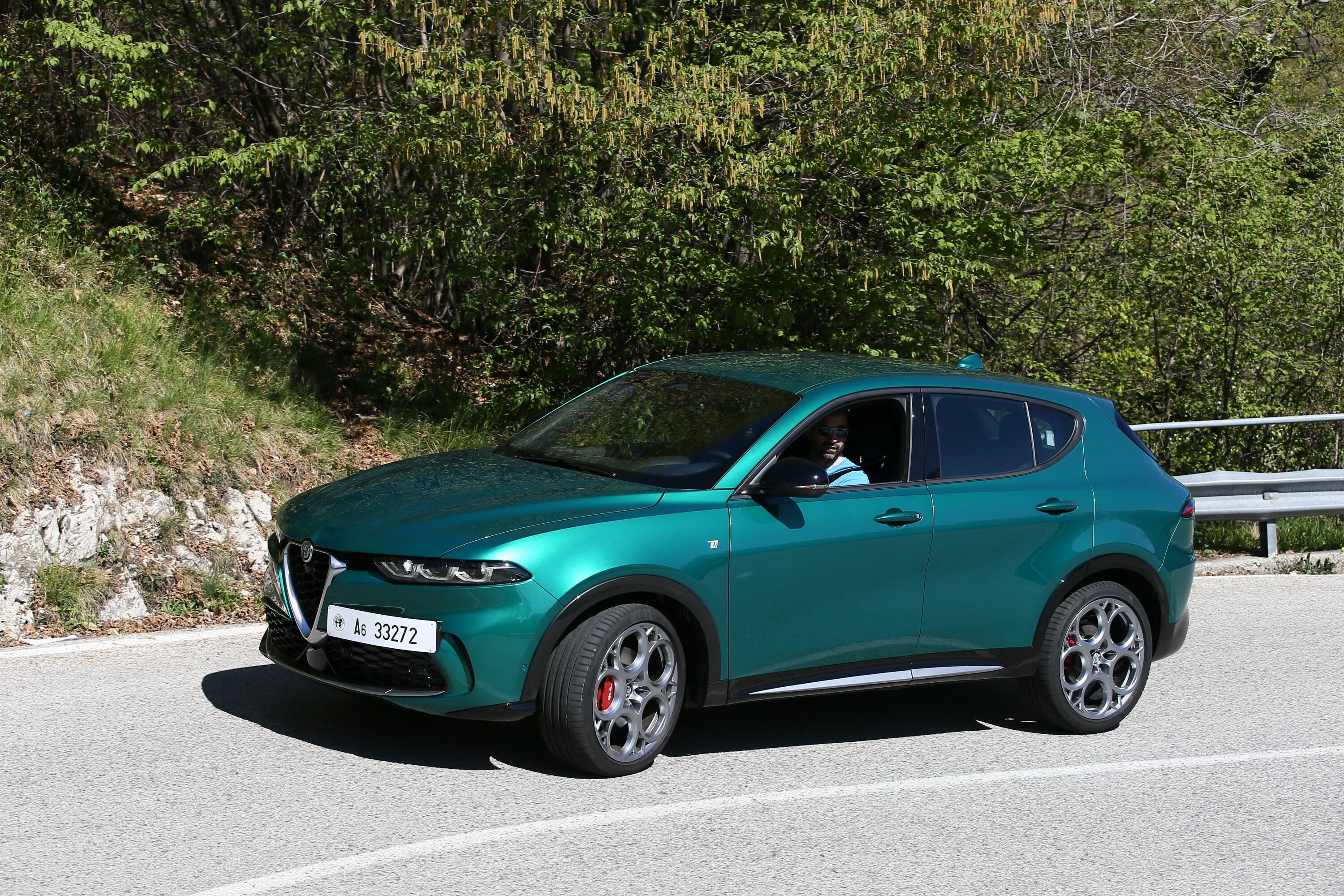
The Tonale can therefore be front-drive, rear-drive, a mix of both and, by extension, petrol-driven, electrically powered or a blend of both.
It’s clear this is a car that’s going to reward you for getting to know it over an extended period, but with just a day at the controls, it’s not always intuitive or predictable that, in terms of handling, input A is going to invariably result in outcome B.
This erodes initial trust in the platform a little but, I’d like to restate that learning the dynamic complexities of the Tonale Q4 would be a fascinating and doubtless rewarding exercise.
What you’re never going to be able to learn your way around, though, is basic physics. If you are a genuinely keen driver, I’d be tempted to skip the Q4 PHEV. Buy something lighter and more agile and pocket the savings.
If any of the terms in this section have left you scratching your head, these articles will help bring you up to speed!

- What is a Powertrain or Drivetrain?
- Power vs torque
- Car suspension explained
- Automatic transmissions (‘gearboxes’) explained
- Chassis control systems explained
- Car vs Ute vs SUV: How the vehicle you buy should guide the way you drive
- What is the WLTP emissions and range test?
Read the press bumf that comes with the Tonale Q4 and fuel economy is a claimed 1.1-1.4L/100km. This is clearly nonsense in real-world conditions, but identifying the use case for those real-world conditions can be surprisingly tricky.
It’s easy to be overly cynical. The quoted range of the Tonale’s battery is 60km when fully charged, a process that, due to the battery’s modest size, can be accomplished overnight on a normal three-pin plug.
Fully expecting Alfa’s range claim to deliver 30-40km when driving the Tonale ‘normally’, I was surprised and delighted when a 40km backroads blat followed up with a 35km freeway drive resulted in the engine only coughing into life on the very last kilometre of my 75km round trip from work to home and back (and, annoyingly, when trying to reverse silently up my steep driveway).

That means that, for the vast majority of Aussies looking to use this car for their daily commute to work, petrol bills will, during the working week, probably amount to zero.
An obvious attraction of a plug-in hybrid is that during the weekend you’re not hampered by range anxiety, plotting charging points or any of that drudgery. Even when the battery’s depleted, you still have more than 530km of range from the petrol tank. That’s impressive.
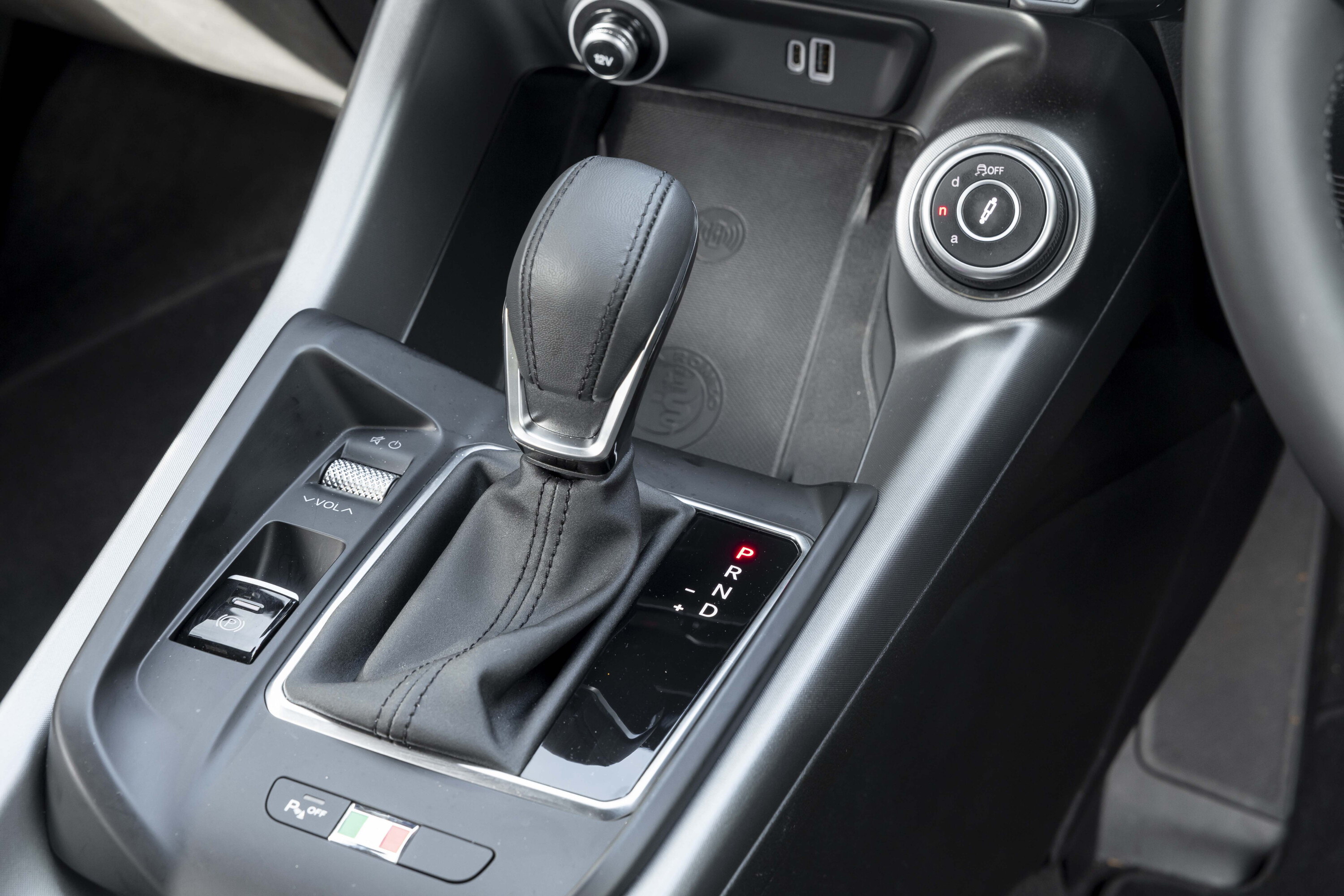
How safe is it?
Equally impressive is the Tonale’s five-star Euro NCAP rating, which featured an 83 per cent score for adult occupant protection, 85 percent for safety assist systems, another 85 per cent for child occupant protection and 66 per cent for vulnerable road user protection.
The car has yet to be officially rated by ANCAP, although its mild hybrid sibling netted five stars in 2022, a rating that is valid until December 2028.
A long list of standard safety equipment comes with the Q4, some items of which are fitted to no other Tonale model.
| Alfa Romeo Tonale Q4 Veloce safety features | |
|---|---|
| 360u00b0 cameras with dynamic lines | Lane departure warning |
| Adaptive cruise control with traffic jam assist | Lane-keep assist |
| Auto emergency braking | Rear cross-traffic alert |
| Blind-spot montitoring | Rear seat reminder |
| Driver behaviour warning | Road sign recognition |
| Forward collision warning | Six airbags |
| Front, rear and side parking sensors | Speed limiter |
| Intelligent speed control | Vulnerable road user detection |

Warranty and running costs
Like all new Alfa Romeos, the Tonale Q4 gets a five-year, unlimited-kilometre warranty backed up with a roadside assist package of the same duration. The battery’s covered by an eight-year/160,000km deal.
Service intervals are pitched at 15,000km or 12 months, whichever arrives first.

VERDICT
The Alfa Romeo Tonale Q4 emerges as a vehicle that is in parts fascinating, frustrating and admirable.
You will read many reviews that either proclaim it as a worthy vehicle of the Alfa tradition or one that doesn’t live up to the Alfa tradition. Ignore them. The Tonale is a car that needs to break with Alfa tradition. The old way hasn’t sold cars for forty years and, in order to earn some relevance, Alfa Romeo needs to be more of a mainstream player and less of a niche badge.
This is absolutely key to assessing this vehicle. Were it not for the firm ride quality and the largely predictable visual tropes inside, this could be a car from one of twenty different manufacturers.
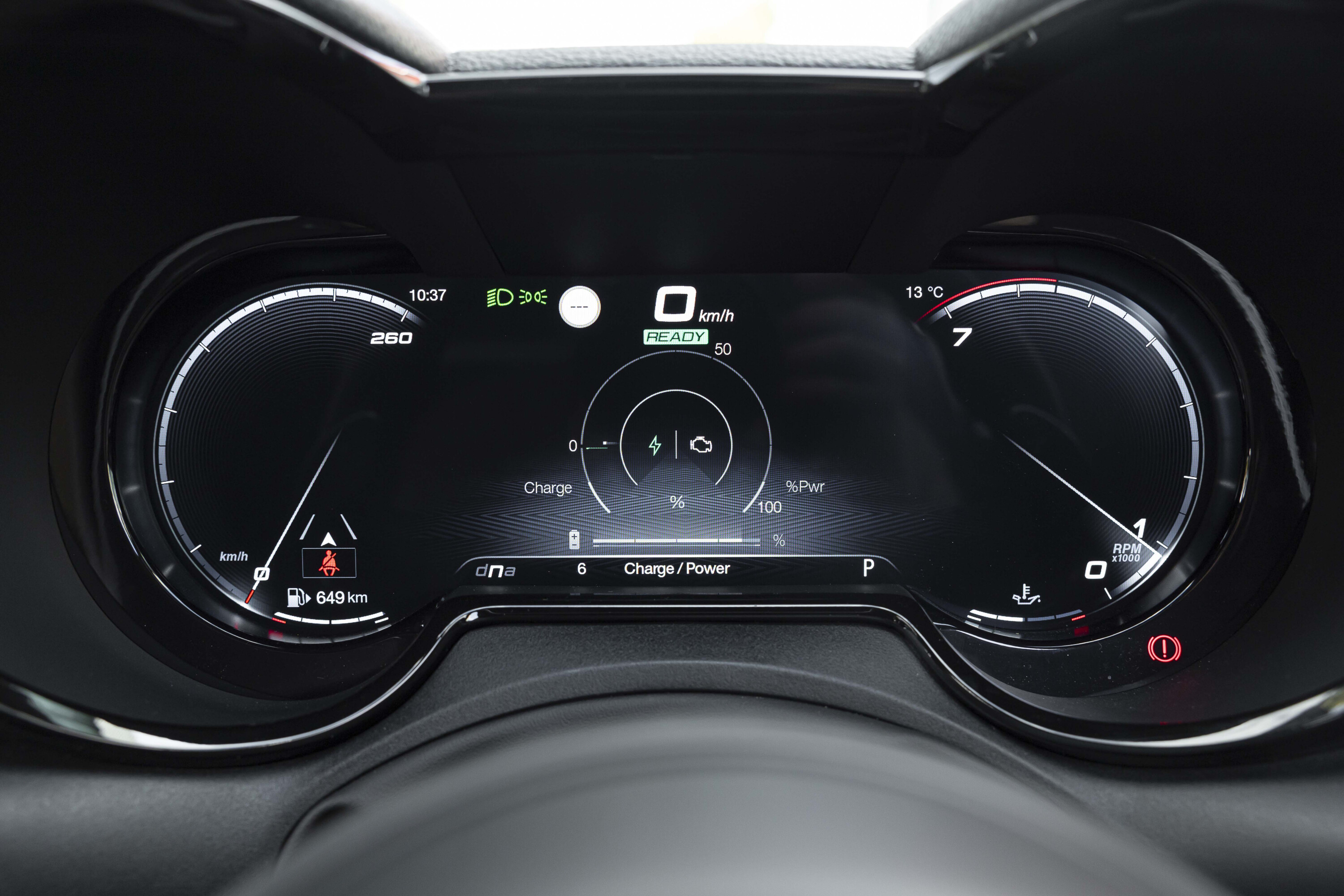
Manufacturers who know how to build a solid, technologically-dense compact SUV that doesn’t feel built down to a price.
That, in itself, is a measure of success for Alfa and credit to the quality control procedures at the Pomigliano d’Arco plant in Naples.
It is a step in the right direction but the journey isn’t over yet and several niggles remain. The overarching question of what an Alfa Romeo is in 2024 is only partially answered here.
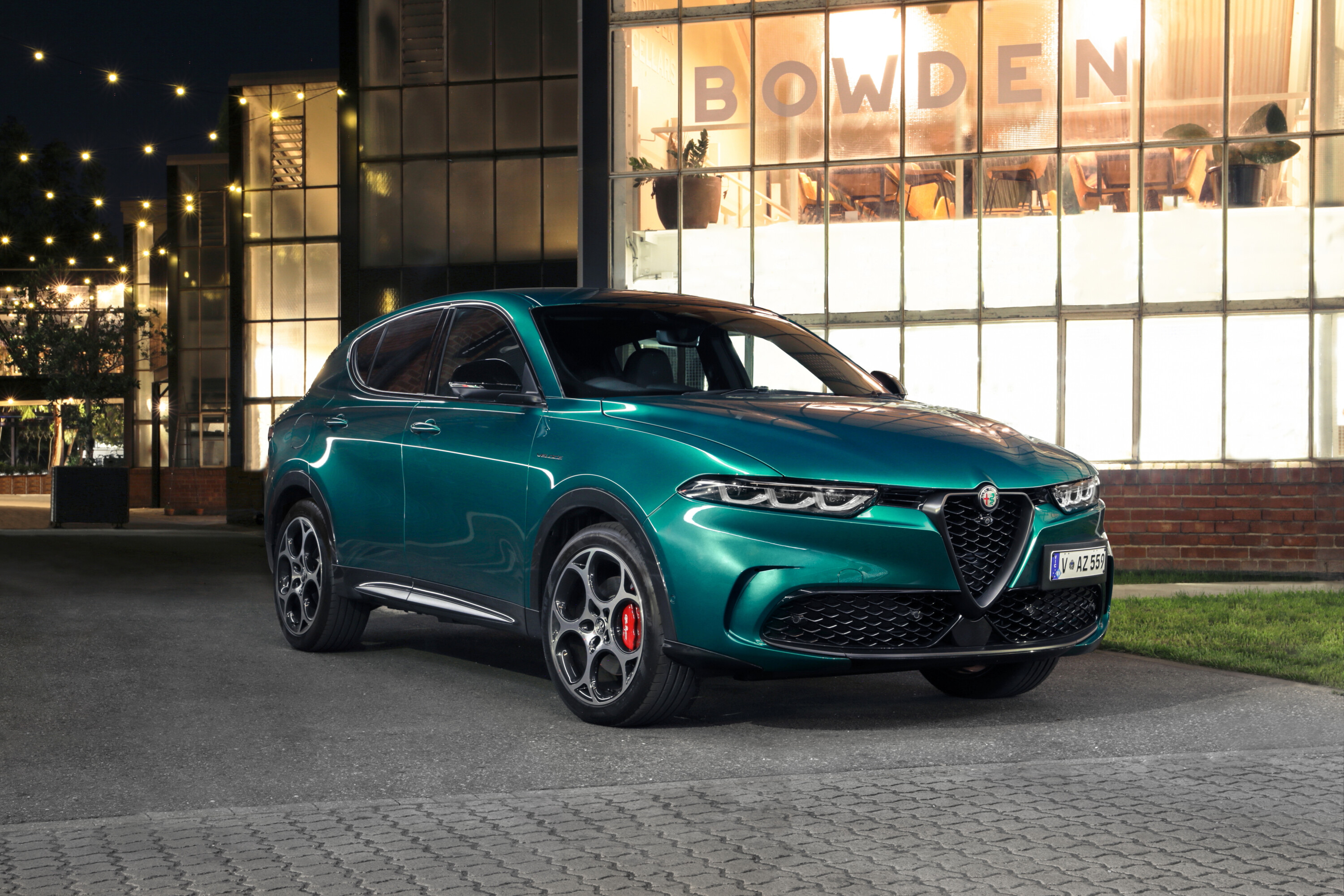
It’s no longer a car that appeals to a vanishing constituency of sentimental tragics who are willing to put up with abysmal build quality and a slipshod customer experience.
Mainstreaming Alfa won’t take the magic away, it ought to merely round out a previously patchy skillset.
Who does the Tonale Q4 suit? It’s somebody who can make the most of its plug-in capabilities and values the badge cachet. It’s no longer necessarily someone who wants to corner on the door handles.
The idea of making a left-field choice without being punished for it is a seductive one and it’s into this somewhat Volvo-shaped void that Alfa Romeo now finds itself sidling. We wish it all the very best.
| Alfa Romeo Tonale Q4 Veloce specifications | |
|---|---|
| Body | Five seat, five-door compact SUV |
| Engine | 1332cc four-cylinder , dohc, 16v, turbo-petrol |
| Motor | 90kW rear mounted |
| Max system power | 208kW @ 5750rpm |
| Max torque | 270Nm @ 1850rpm |
| Transmission | 6-speed automatic |
| Weight | 1835kg |
| Economy | 1.1-1.4L/100km (NEDC) |
| 0-100km/h | 6.2sec (claimed) |
| Price | $77,500 + on-road costs |
| On sale | Now |
Frequently asked questions
Score breakdown
Things we like
- Strong range on battery alone
- Forward-thinking
- Materials quality and fit a big step forward
- Relative exclusivity
Not so much
- Feels all of its 1835kg through corners
- The price is a bit of a stretch
- Small in the back
- We experienced some glitchy electronics
We recommend
-
News
2023 Alfa Romeo Tonale pricing and features: Petrol, PHEV
Alfa Romeo's new Tonale small SUV has arrived in Australia from $49,900 in mild-hybrid guise, with the plug-in hybrid due by Christmas
-
Reviews
VIDEO: 2023 Alfa Romeo Tonale Hybrid review: First Australian drive
The ‘metamorphosis’ vehicle for Alfa Romeo isn’t a flagship sports car – it’s an efficiency-focused premium small SUV called Tonale, whose mission is to transform the 123-year-old Italian brand’s dwindling sales
-
 News
News2025 New Car Calendar: All the new cars coming to Australia
Take a look at our list of what is expected to launch in Australia in 2025 – plus those we might not see locally just yet


